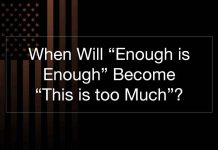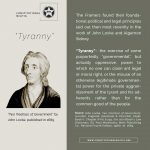Last Updated on April 1, 2021 by Constitutional Militia
This article originally appeared in the Government Review, Vol 19, No. 2 (2000).
I. Introduction
The major problems besetting contemporary public education are anything but accidental. Rather, in large measure they can be traced to four interrelated sources, nesting together in the manner of a Russian matrioshka:
First, militant teachers’ unions–primarily, the National Education Association (“NEA”) and the American Federation of Teachers (“AFT”)–which have organized themselves and operate as politically powerful special-interest groups intent on using public education to further their own economic, political, and ideological agendas.[1]
Second, compulsory public-sector collective bargaining statutes throughout the country that grant the unions’ local affiliates the monopolistic privilege of exclusive representation of all teachers in government schools.
Third, judicial decisions all the way to, and especially from, the Supreme Court of the United States that have apologized for, confirmed, protected, and even extended the unions’ powers as exclusive representatives to:
· negotiate and administer collective-bargaining agreements;
· speak purportedly for all teachers even outside the collective-bargaining process;
· collect “agency fees” from nonunion teachers; and
· engage in wide-ranging activities supposedly “germane to collective bargaining.”
Fourth, the ignorance of the general public as to what is going on, and the adverse consequences to society as a whole if this situation continues and (as seems likely) intensifies.
Of these, the judicial decisions have constituted the key, decisive, and indispensable events, above and beyond the lobbying that prompted the legislation establishing compulsory public-sector collective bargaining through exclusive representation. For, in numerous cases, all of which involved the teachers’ unions–including Abood v. Detroit Board of Education (“Abood”);[2] Perry Education Association v. Perry Local Educators’ Association (“Perry”);[3] Knight v. Minnesota Community College Faculty Association (“Knight I”);[4] Minnesota State Board for Community Colleges v. Knight (“Knight II”);[5] Chicago Teachers Union, Local No. 1 v. Hudson (“Hudson”);[6] and Lehnert v. Ferris Faculty Association (“Lehnert”)[7]–the Supreme Court could and should have made serious inroads into, if not eliminated entirely, the most abusive and dangerous elements of compulsory bargaining, if not the entire practice itself.
In all those cases, the legal issues were properly presented; the necessary factual records were fully developed; and convincing (yea, by all measures compelling) constitutional arguments were put forward. In no instance did the Supreme Court ever rule that an issue central to the litigation was not adequately raised, that the case was not ripe for adjudication because of some evidentiary defect in the record, or that the complaining parties’ arguments were simply frivolous or foreclosed by a truly applicable precedent. Nevertheless–or, perhaps, because the cases were so carefully prepared, and struck at the heart of the problem of compulsory public-sector collective bargaining–the Court knowingly and intentionally chose to avoid the issues,[8] to turn a blind eye to the facts,[9] or to reject the complainants’ arguments on the bases of transparent evasions[10] and misuse of precedent.[11]
Instead, in Abood the Court upheld the constitutionality of the “agency shop” in public-sector employment against a challenge under the First Amendment, pretending to be bound by two prior private-sector cases–Railway Employes’ Department v. Hanson (“Hanson”)[12] and International Association of Machinists v. Street (“Street”)[13]–that (as described below) had decided no First-Amendment issues at all. In Perry, the Court allowed an exclusive representative to enjoy special privileges outside of collective bargaining that undermined a rival employee organization.[14] In Knight Iand Knight II, the Court upheld exclusive representation through the back door of a summary affirmance in Knight I, and then used the shoddy device of relying on that bare affirmance as a precedent in Knight II to extend exclusive representation beyond the bounds of reason–all of this a coldly calculated tactic that apparently had been plotted and prepared long before Knight I and Knight II arrived at the Court, and that was continued thereafter.[15]
In Hudson, the Court refused to apply traditional requirements of procedural due process to unions’ collection of agency fees, but instead created a bastard theory of “First-Amendment due process” that mires nonunion employees in litigation over the unions’ assessments of agency fees, without coming to grips with many of the most important issues of proof.[16] And in Lehnert, the Court licensed the collection of nonunion teachers’ agency fees to support the activities of unions in bargaining units other than those in which the teachers actually worked; and also held that unions may charge nonunion teachers for supposed “collective-bargaining” activities not only outside the definitions of such activities in State laws but even illegal![17] Of no small moment, all of these pathbreaking cases involved the NEA or the AFT.
Thus, the major problems from which contemporary public education suffers fundamentally reflect not acts of God or Nature for which no one is responsible, or even someone’s mere negligence, but instead the willful–and, one must presume, purposeful–refusal of Justices of the Supreme Court to apply the Constitution so as to protect nonunion teachers, students, and the general public. Instead, the Justices have effectively empowered the unions and their political and bureaucratic allies to ride roughshod over public education with virtual immunity from constitutional control in the most important particulars.
A previous article in this journal traced the evolution of the fraudulent “labor-peace” apology for compulsory collective bargaining from the private-sector cases of the 1930s through the public-sector cases of the present day.[18] This article focuses on another fundamental aspect of that evolution: the essential deceitfulness of Abood–perhaps the main prop by which the Supreme Court has shored up exclusive representation in public-sector employment, without ever facing up to the serious constitutional issues that scheme raises.
For Part II click below.




































